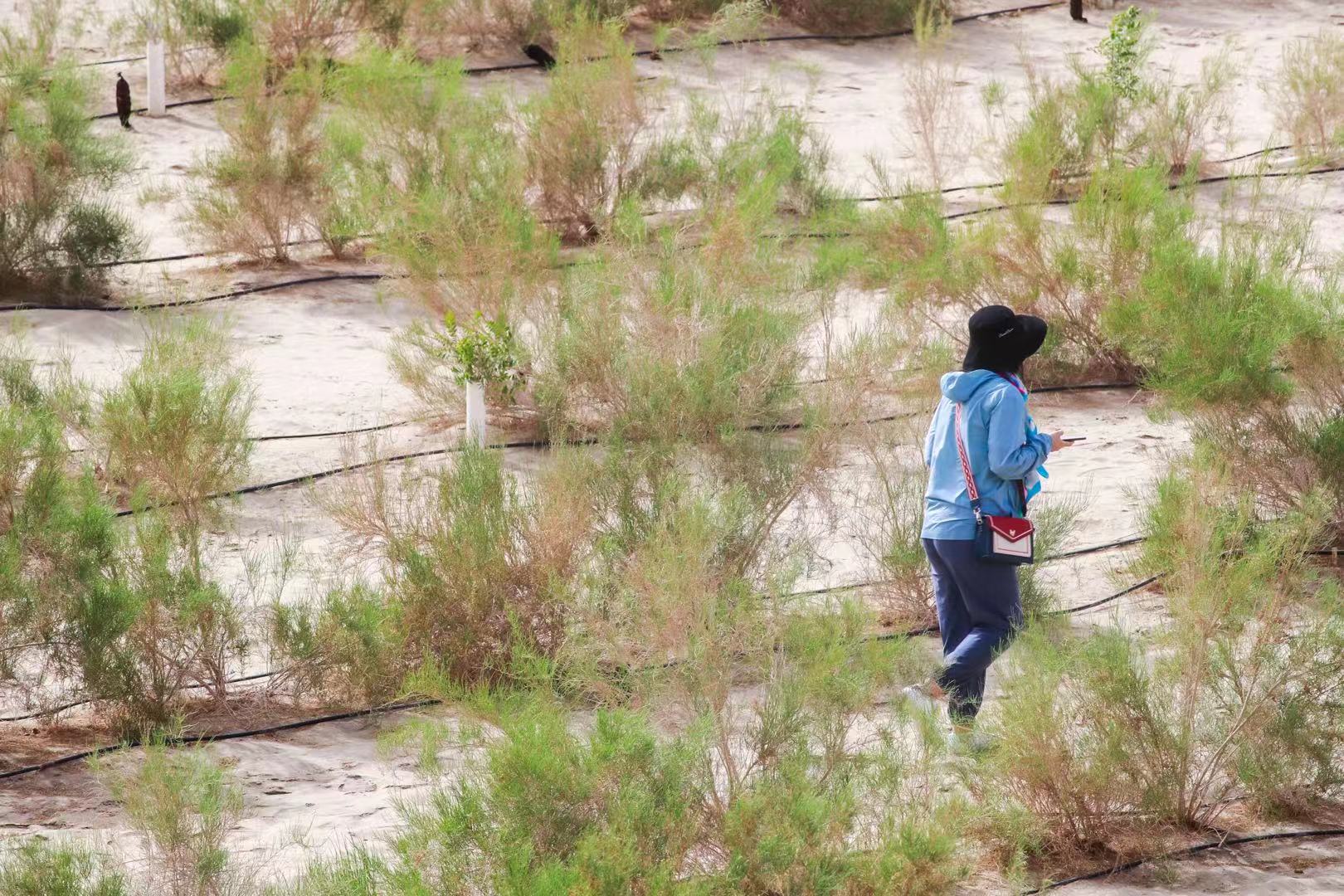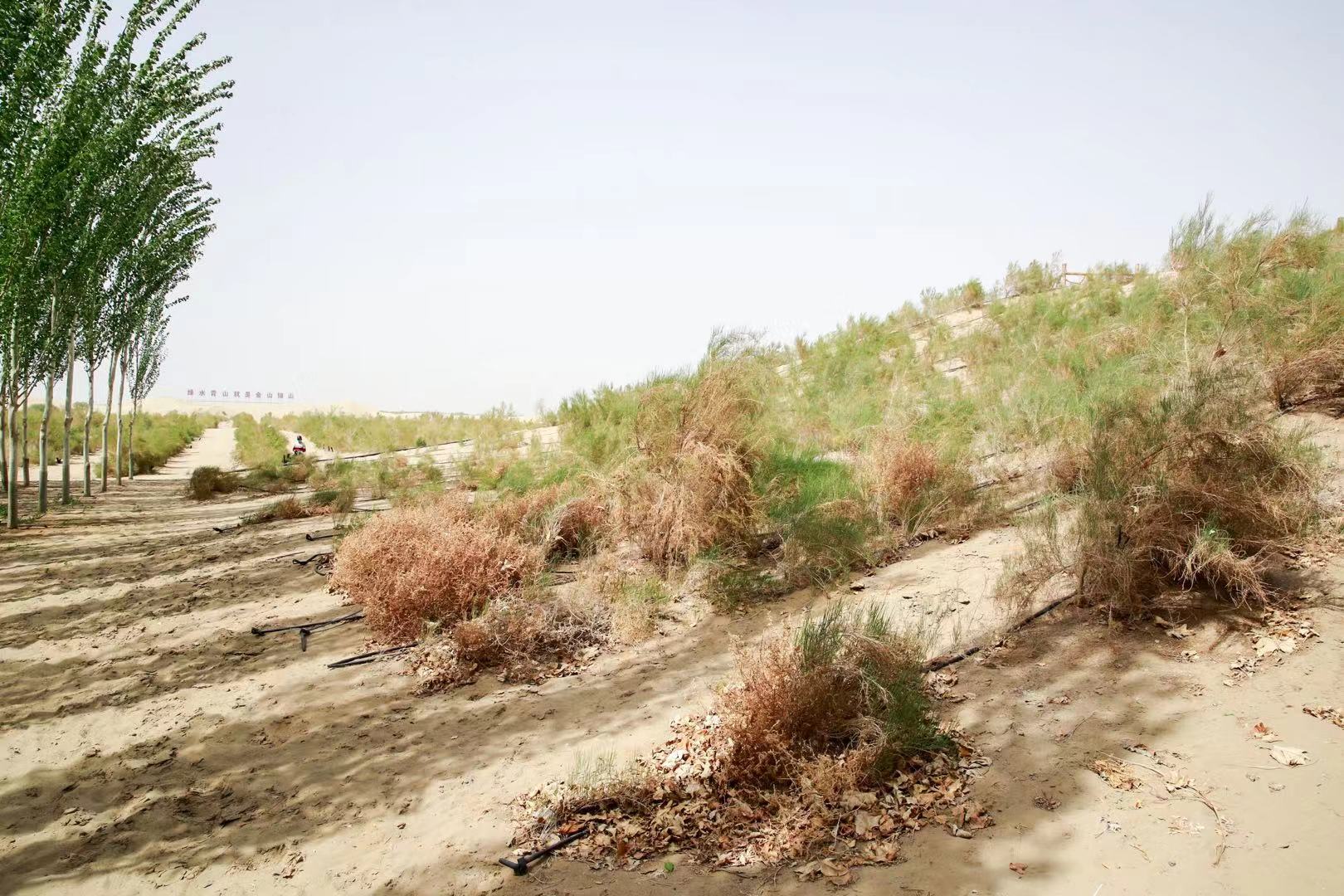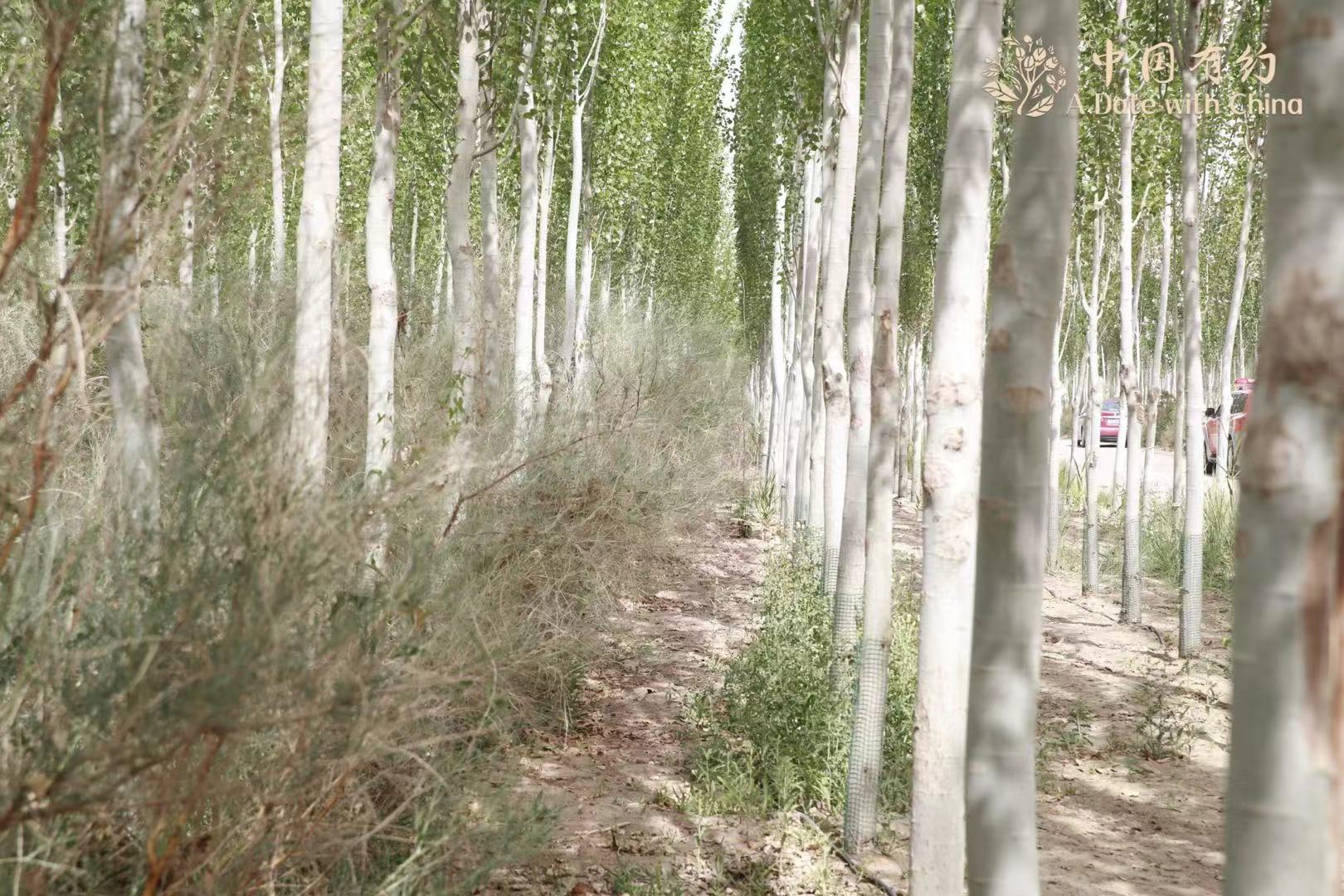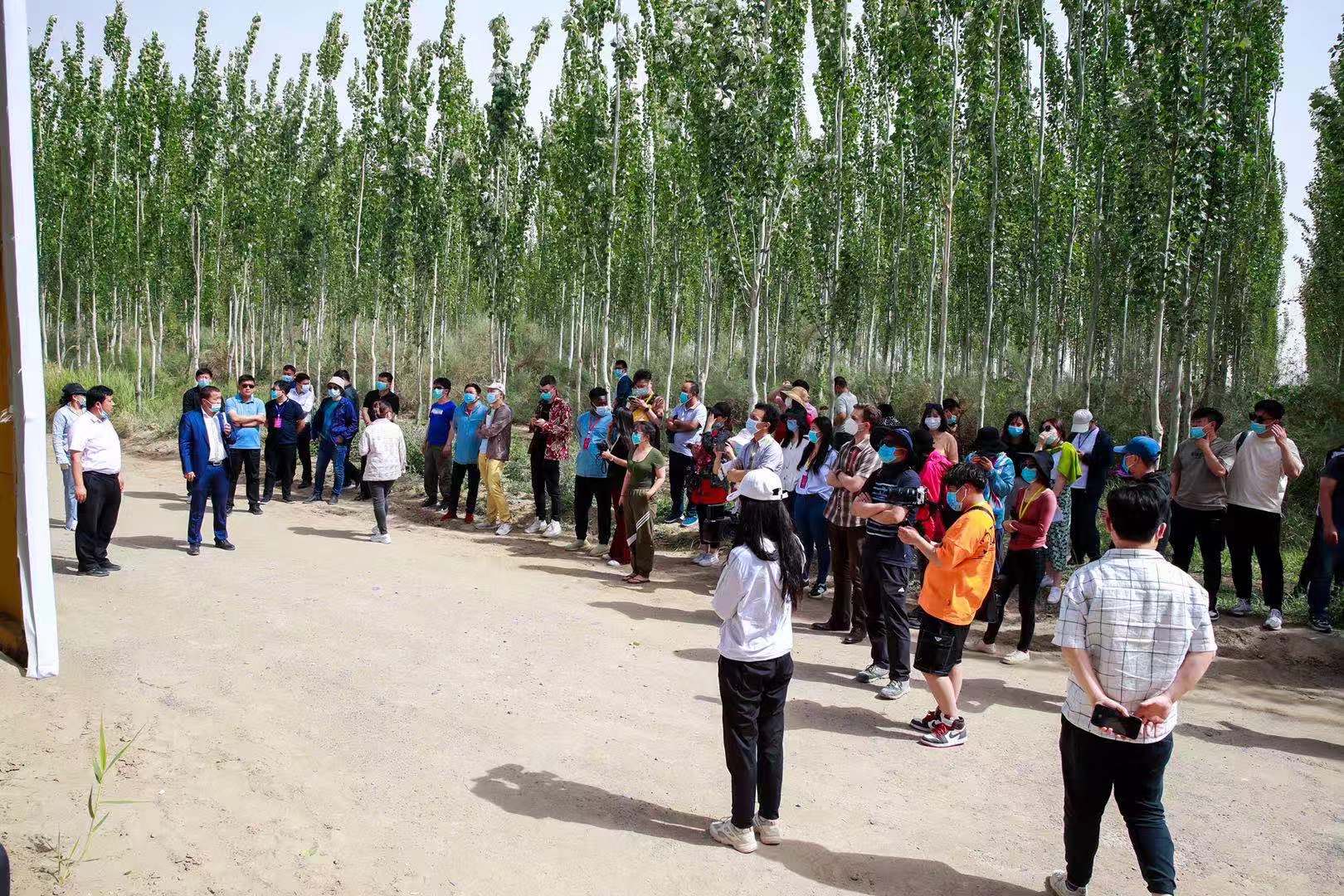Once characterised by arid lands, sand dunes and dust devils, Makit County in Kashgar Prefecture of northwest China's Xinjiang Uygur Autonomous Region now boasts an expansive scenery of man-made forests and desert farms.
During the ongoing "A Date With China" media tour, CGTN Digital visited one such desert farm on Thursday.

Sand dunes are leveled and irrigation pipes are laid underneath to keep the soil moist, Makit County, Kashgar Prefecture, Xinjiang Uygur Autonomous Region, northwest China, May 20, 2021. /A Date With China
Sand dunes are leveled and irrigation pipes are laid underneath to keep the soil moist, Makit County, Kashgar Prefecture, Xinjiang Uygur Autonomous Region, northwest China, May 20, 2021. /A Date With China

The Wind Protection and Sand Fixation Ecological Construction Project in Makit County, Kashgar Prefecture, Xinjiang Uygur Autonomous Region, northwest China, May 20, 2021. /A Date With China
The Wind Protection and Sand Fixation Ecological Construction Project in Makit County, Kashgar Prefecture, Xinjiang Uygur Autonomous Region, northwest China, May 20, 2021. /A Date With China

The Wind Protection and Sand Fixation Ecological Construction Project in Makit County, Kashgar Prefecture, Xinjiang Uygur Autonomous Region, northwest China, May 20, 2021. /A Date With China
The Wind Protection and Sand Fixation Ecological Construction Project in Makit County, Kashgar Prefecture, Xinjiang Uygur Autonomous Region, northwest China, May 20, 2021. /A Date With China

Media personnel gathered to observe the Wind Protection and Sand Fixation Ecological Construction Project in Makit County, Kashgar Prefecture, Xinjiang Uygur Autonomous Region, northwest China, May 20, 2021. /A Date With China
Media personnel gathered to observe the Wind Protection and Sand Fixation Ecological Construction Project in Makit County, Kashgar Prefecture, Xinjiang Uygur Autonomous Region, northwest China, May 20, 2021. /A Date With China
Perched on the fringe of the Taklamakan Desert, the county is hedged in by sand on three sides.
"Before 2010, annually the county's precipitation was less than 50 millimeters and dust weather was recorded on as much as 150 days," said Wang Yufeng, deputy secretary of County Natural Resources Bureau.
"The desert encroached on the oases in the county, seriously threatening the physical and mental health of the people," Wang added.
So how was this afforestation miracle pulled off?
In 2012, an ambitious 667-square kilometre wind protection and sand-fixing project was launched.
"In order to improve the survival rate of the seedlings, to ensure the success of afforestation, the dunes were leveled and paved with drip irrigation," Wang explained.
The efforts have reaped fruitful results. Over the past nine years, the overall survival rate of all kinds of seedlings has reached 95 percent. Over 220 million trees, including apple, prunes, and poplars, make a vast sea of green.
In 2018, annual precipitation in the county blew past 100 millimeters, according to the meteorological department.
Cleaner and verdant surroundings have also boosted the economy, employing 270 people from 150 households of all ethnic groups. On an average, each household earns an annual income of 40,000 yuan.
Voluntary tree plantings also render the residents eligible for other benefits and rewards.

Herbs grown at the Wind Protection and Sand Fixation Ecological Construction Project on display, Makit County, Kashgar Prefecture, Xinjiang Uygur Autonomous Region, northwest China, May 20, 2021. /A Date With China
Herbs grown at the Wind Protection and Sand Fixation Ecological Construction Project on display, Makit County, Kashgar Prefecture, Xinjiang Uygur Autonomous Region, northwest China, May 20, 2021. /A Date With China
The plantation of cistanche, a traditional Chinese herb, used in treating chronic renal disease, impotence and female infertility, is expected to achieve an output value of 200 million yuan.
Afforestation of deserts has been suggested as one of the measures to mitigate the ravages of global warming as trees can effectively purify the air by absorbing greenhouse gases from the atmosphere.
China has pledged to achieve carbon neutrality by 2060.

